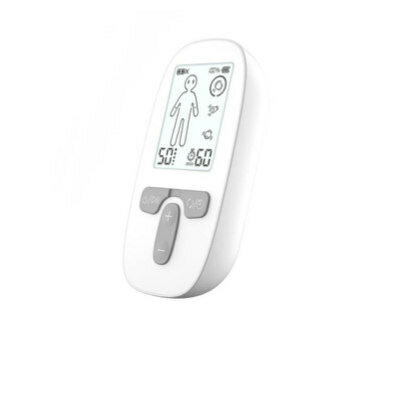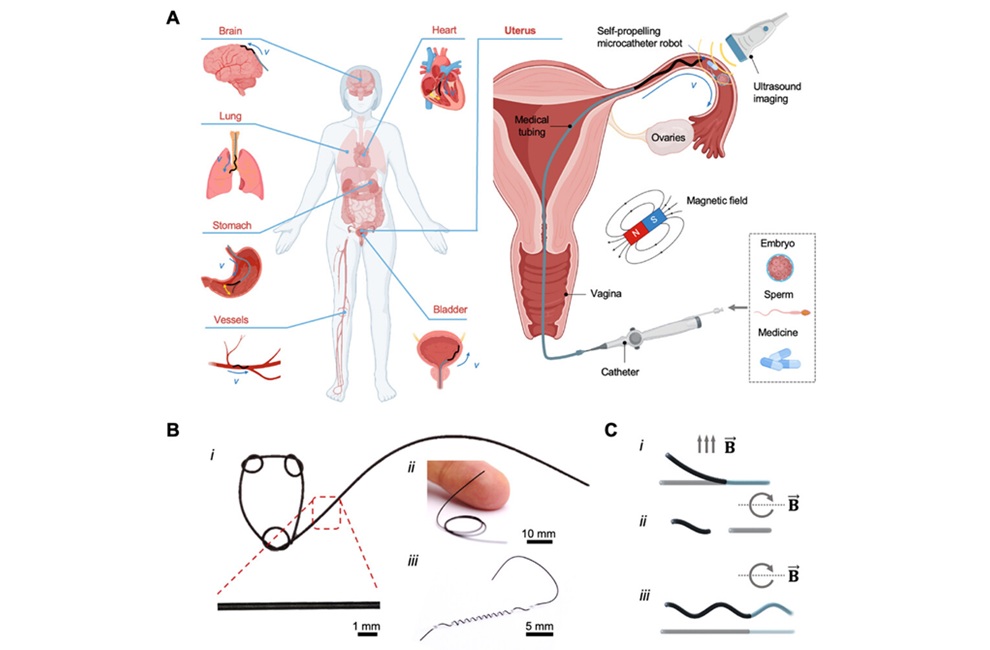Outpatient Services Enjoying Increased Surgical Volumes
|
By HospiMedica International staff writers Posted on 31 Mar 2014 |
A ten-country study on surgical procedure volumes provides geographical insights on surgery trends, growth drivers, and inhibitors.
The report, by Kalorama Information (New York, NY, USA), an independent medical market research firm, examines surgery trends with an in-depth analysis of world population growth, aging demographics, lifestyle indicators, growing incidence of diseases, advances in surgical techniques, and several other general issues affecting the forecast for procedures. Procedure volumes are displayed for eight general categories of surgery, and the growth trends in those areas are forecasted to 2018 globally. The report also provides specific analysis for the United States, United Kingdom, Italy, France, Germany, Brazil, Russia, China, Mexico, and Japan. Regional segmentation is also provided for the US and Europe, Asia, and the Rest of World.
Over the past decade there has been a slow shift from all surgery done at the hospital to many surgeries done at outpatient surgical centers and surgeons’ offices, due to the development of safe practices and improved tools that have allowed physicians to perform surgical procedures faster and safer than at any other time in history, and have also reduced surgical procedure costs. The rapid adoption of laparoscopy in the 1990s was a start to this development; however, as with any industry, there are trends that continue to emerge due to advancement of technologies and issues that restrain the industry from moving forward with those advancements.
According to the report, the days of “operating as usual” are over, and hospitals must compete aggressively at a local level for surgical procedure volumes, which translates to income. While many complex and open surgical procedures will not be candidates for surgery centers and physician offices, the advancement of minimally invasive surgery (MIS) techniques has resulted in physicians opting to perform 60%–70% of their surgeries in surgery centers, moving away from the hospital environment. To counter this, hospitals are increasing media exposure to the general public by way of newsletters, interactive websites, and aggressive advertisement to patients.
Among the issues being affected by these trends that are significantly impacting the surgical markets today are the cost and economics of healthcare; medical tourism trends; safety concerns in surgery; sentinel events; hospital-acquired infections (HAIs); surgeon training and education; minimally invasive surgery (MIS) solutions; and the use of robotics in surgery. All these issues, and more, are under constant economic evaluation to assure efficiency in the allocation of health resources by healthcare and government agencies that must decide how to allocate their resources for a wide range of very different interventions.
Related Links:
Kalorama Information
The report, by Kalorama Information (New York, NY, USA), an independent medical market research firm, examines surgery trends with an in-depth analysis of world population growth, aging demographics, lifestyle indicators, growing incidence of diseases, advances in surgical techniques, and several other general issues affecting the forecast for procedures. Procedure volumes are displayed for eight general categories of surgery, and the growth trends in those areas are forecasted to 2018 globally. The report also provides specific analysis for the United States, United Kingdom, Italy, France, Germany, Brazil, Russia, China, Mexico, and Japan. Regional segmentation is also provided for the US and Europe, Asia, and the Rest of World.
Over the past decade there has been a slow shift from all surgery done at the hospital to many surgeries done at outpatient surgical centers and surgeons’ offices, due to the development of safe practices and improved tools that have allowed physicians to perform surgical procedures faster and safer than at any other time in history, and have also reduced surgical procedure costs. The rapid adoption of laparoscopy in the 1990s was a start to this development; however, as with any industry, there are trends that continue to emerge due to advancement of technologies and issues that restrain the industry from moving forward with those advancements.
According to the report, the days of “operating as usual” are over, and hospitals must compete aggressively at a local level for surgical procedure volumes, which translates to income. While many complex and open surgical procedures will not be candidates for surgery centers and physician offices, the advancement of minimally invasive surgery (MIS) techniques has resulted in physicians opting to perform 60%–70% of their surgeries in surgery centers, moving away from the hospital environment. To counter this, hospitals are increasing media exposure to the general public by way of newsletters, interactive websites, and aggressive advertisement to patients.
Among the issues being affected by these trends that are significantly impacting the surgical markets today are the cost and economics of healthcare; medical tourism trends; safety concerns in surgery; sentinel events; hospital-acquired infections (HAIs); surgeon training and education; minimally invasive surgery (MIS) solutions; and the use of robotics in surgery. All these issues, and more, are under constant economic evaluation to assure efficiency in the allocation of health resources by healthcare and government agencies that must decide how to allocate their resources for a wide range of very different interventions.
Related Links:
Kalorama Information
Latest Business News
- Philips and Masimo Partner to Advance Patient Monitoring Measurement Technologies
- B. Braun Acquires Digital Microsurgery Company True Digital Surgery
- CMEF 2025 to Promote Holistic and High-Quality Development of Medical and Health Industry
- Bayer and Broad Institute Extend Research Collaboration to Develop New Cardiovascular Therapies
- Medtronic Partners with Corsano to Expand Acute Care & Monitoring Portfolio in Europe
- Expanded Collaboration to Transform OR Technology Through AI and Automation
- Becton Dickinson to Spin Out Biosciences and Diagnostic Solutions Business
- Boston Scientific Acquires Medical Device Company SoniVie
- 2026 World Hospital Congress to be Held in Seoul
- Teleflex to Acquire BIOTRONIK’s Vascular Intervention Business
- Philips and Mass General Brigham Collaborate on Improving Patient Care with Live AI-Powered Insights
- Arab Health 2025 Celebrates Landmark 50th Edition
- Boston Scientific Acquires Medical Device Company Intera Oncology
- MEDICA 2024 to Highlight Hot Topics of MedTech Industry
- Start-Ups To Once Again Play Starring Role at MEDICA 2024
- Boston Scientific to Acquire AFib Ablation Company Cortex
Channels
Critical Care
view channel
Soft Robots Could Donate Their Heart to Humans
Heart failure is a growing global health burden, and existing artificial hearts and mechanical pumps often fall short of long-term clinical needs. Many current devices rely on rigid components and complex... Read more
Bioadhesive Strategy Prevents Fibrosis Around Device Implants on Peripheral Nerves
Peripheral nerves connect the brain and spinal cord to muscles, organs, and sensory systems, making them key targets for treating neurological and systemic diseases. However, implantable bioelectronic... Read moreSurgical Techniques
view channel
Minimally Invasive Surgery Proven Safe and Effective for Complex ‘Whipple’ Procedure
Tumors of the pancreatic head often require a highly complex operation known as pancreatoduodenectomy or the Whipple procedure. This surgery involves removing multiple structures and creating several internal... Read more
Catheter-Based Procedures Offer Less Invasive Option for Treatment of Valvular Disease
Valvular heart disease, caused by tight or leaky valves between heart chambers, affects up to 10% of older adults and leads to more than 120,000 deaths globally each year. Traditional open-heart surgery... Read morePatient Care
view channel
Revolutionary Automatic IV-Line Flushing Device to Enhance Infusion Care
More than 80% of in-hospital patients receive intravenous (IV) therapy. Every dose of IV medicine delivered in a small volume (<250 mL) infusion bag should be followed by subsequent flushing to ensure... Read more
VR Training Tool Combats Contamination of Portable Medical Equipment
Healthcare-associated infections (HAIs) impact one in every 31 patients, cause nearly 100,000 deaths each year, and cost USD 28.4 billion in direct medical expenses. Notably, up to 75% of these infections... Read more
Portable Biosensor Platform to Reduce Hospital-Acquired Infections
Approximately 4 million patients in the European Union acquire healthcare-associated infections (HAIs) or nosocomial infections each year, with around 37,000 deaths directly resulting from these infections,... Read moreFirst-Of-Its-Kind Portable Germicidal Light Technology Disinfects High-Touch Clinical Surfaces in Seconds
Reducing healthcare-acquired infections (HAIs) remains a pressing issue within global healthcare systems. In the United States alone, 1.7 million patients contract HAIs annually, leading to approximately... Read moreHealth IT
view channel
EMR-Based Tool Predicts Graft Failure After Kidney Transplant
Kidney transplantation offers patients with end-stage kidney disease longer survival and better quality of life than dialysis, yet graft failure remains a major challenge. Although a successful transplant... Read more















